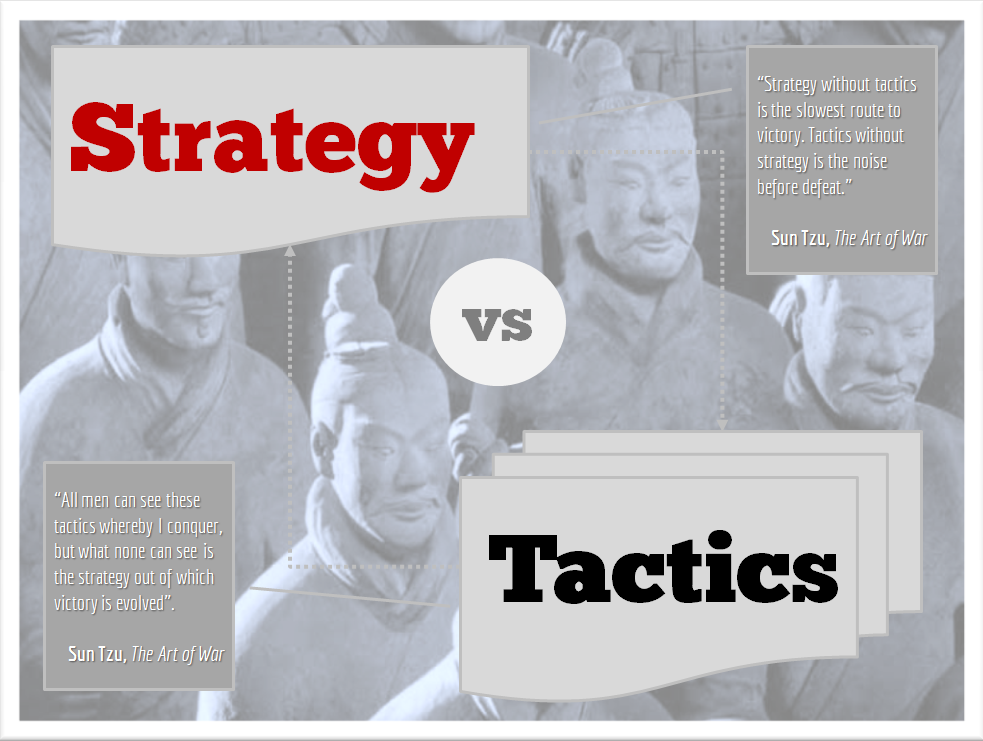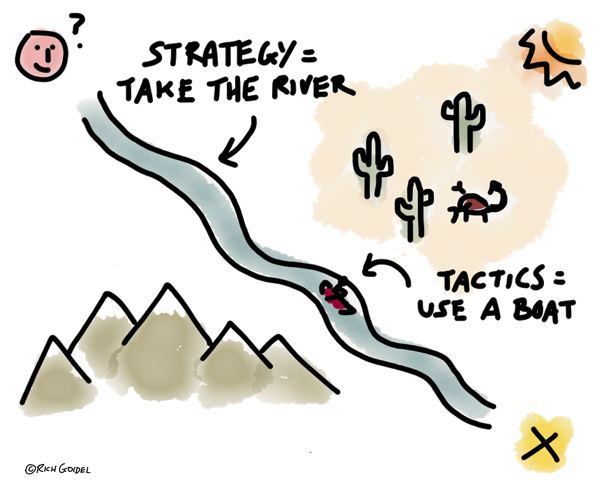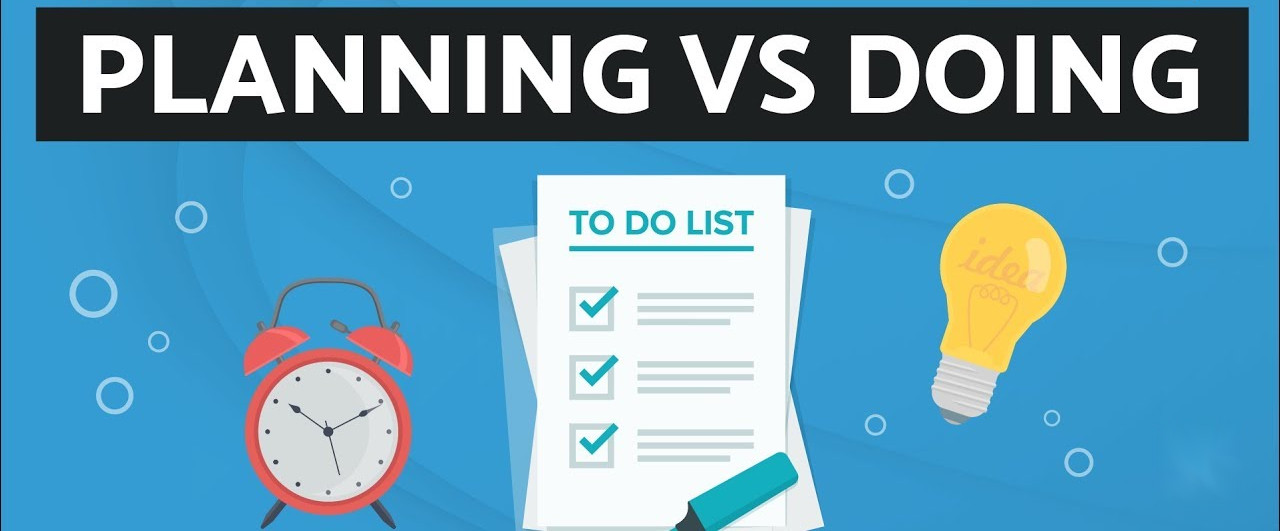When discussing all the major struggles we face in life, one of the least understood, least appreciated, and most detrimental is the struggle between planning and doing.
Planners are thoughtful, cautious, detailed, systematic, and prepared.
Doers are rash, impulsive, and act before they think.
Based on the way I have described them, guess which one I am…
That’s right. Unfortunately, I am a Planner. Don’t get me wrong, I’m happy that I plan things out before jumping in, but I say unfortunately because it holds me back from getting things done. But don’t get this confused with being a procrastinator, which I am as well.
The Ultimate Planner
When I was in college, back in the days of paper coursebooks, I planned a lot. When I changed my major at the beginning of my Sophomore year, I had already planned out the remaining three years of college so well that I knew every course I planned to take every semester for the rest of my undergraduate career. Then the university announced they were changing from trimesters to semesters and that most of their course offerings were changing as well. This meant I had to go back to the drawing board, accommodate for courses that would no longer be offered (I would have loved to have taken a stab at Old Norse which was eliminated), and review everything new to re-plan the remaining 2 years. In that planning I figured out how close I was to meeting the requirements for a second degree and ended up earning a second BA in a fifth year.
Planning continued for years to come, not being thwarted by setback after setback. Like when I had to give up on a Ph.D. after getting turned down by every funding source I had applied to (they shouldn’t call it a “guaranteed loan” if they can turn you down). I simply moved home, found a job which led to a career in publishing. When that company moved and didn’t offer a cost of living increase, I found a different career with a national youth-serving nonprofit. I worked and advanced quickly for 13 years until that organization totally changed its corporate values and a new CEO told me that I was no longer needed. At this point I had already planned out at least another decade of advancement, but all this had to be abandoned.
So, without any planning I began a new career in a totally different field (senior care services) but in a position which utilized the particular set of skills I had developed over the years (fundraising). Unfortunately, this was more of “something I could do” (fundraising) rather than what I “wanted to do” (operations). I also quickly realized this career would be a dead end (I was an individual contributor who didn’t have a department to advance within, and since I was new to healthcare, I wouldn’t have the opportunity to move to another department). Furthermore, the company wasn’t willing to adequately fund my department and most of the board and the target audience didn’t feel my position was necessary. Finally, there was zero job satisfaction so I just rode it out as long as I could for the paycheck.
When the opportunity came to relocate with my wife’s career we jumped at it. Unfortunately, the jobs are pretty thin in our new city and the majority of those available are all what I would consider entry level (expecting a Master’s Degree, usually in social work, and 3-5 years’ experience for $25,000-30,000 a year). Nonprofit jobs are much more about who you know than what you know, and I don’t really have a network in this city so it’s just not that easy to break back into the nonprofit world.
So now, I’m back to planning. But I’m taking my time because I’m planning to start my own business. Because of all the legal and tax requirements involved with a new startup, I refuse to do this without a lot of planning.
The Planning Process
While the importance of planning may be obvious, the process may be difficult, confusing, and even time-consuming. This is why planning is often not given the time and attention it needs or in truth is often skipped entirely. But with a better understanding of the process, planning can become more formulaic and therefore easier for those who engage in it.
Different situations and outcomes require different types of plans so I will first discuss the types of planning. Next I will cover the process for developing a plan and finally the ways to evaluate the success and completion of those plans.
Types of Planning:
Strategic Planning covers foundations and overviews and since its scope can cover years, is sometimes equated to long-term planning. In business, strategic planning includes the fundamental components of the organization such as vision, mission, and values. In education, strategic planning defines the career you want to prepare for while in fitness it will define your anticipated health outcomes. In other words, strategic planning is all about “why” the business operates (to provide widgets in the Midwest), “why” you are getting an education (to become an archaeologist), or “why” you are changing your diet and exercise (to lower blood pressure and cholesterol to the point medication is no longer required).

Tactical Planning supports strategic planning and incudes the tactics which will be used to achieve the outcomes defined in the strategic plan. Tactical plans will generally cover a year or less and break the strategic goals down into “actionable tasks.” In other words, strategic planning is all about “what” the business does (sells widgets to local retailers, resolve complaints with a 90% or higher satisfaction rate), “what” the student learns (take course in field methods, lithic analysis, and museum theory), “what” you do to improve your health (take up cardio to lower blood pressure, and start a low cholesterol diet).

Operational Planning typically defines the day-to-day operations which lead to the goals defined in strategic plan. Operational plans can be further divided into single use plans for events or activities which will happen only once (a specific campaign) and ongoing plans covering policies and procedures for day-to-day operations and common, recurring events (sales pitches, policies for handling customer complaints). In other words, strategic planning is all about “how” the business generally operates (open 5 days per week, salesmen making 10 sales calls per week), “how” you are getting your education (attending classes regularly, studying before exams), or “how” you are changing your diet and exercise (jogging for 30 minutes 4 times per week, following the Adkins diet).
Contingency Planning covers the planning for when circumstances call for a change or preparations for the unexpected. There’s a old military adage that say “no plan survives contact with the enemy,” and contingency planning can help pull a victory from that enemy contact. In other words, contingency planning is all about the “what if’s” like “what if” my business can’t beat a larger competitor (lower prices to improve competitiveness), “what if” my chosen field has poor job prospects (change major to a related field that’s in higher demand), or “what if” I injure my knee running (take up cycling because its lower impact).
Steps of Planning
Now that we know the different kinds of planning or levels of planning, what steps do we follow to develop a good plan? Any amount of research will show that sources differ on the steps involved in planning and even in the number of steps involved. Furthermore, you will quickly learn that the planning will vary depending on the type of planning you are doing (strategic v. operational) and even the venue of your planning (in a business setting you may need a submission and approval phase, etc.). So without being definitive, and while trying to be all encompassing, here are the basics steps involved with the planning process.
Determine the Need / Define Your Status – You need to start by identifying what needs to change. This may be discovered passively as when a problem develops and surprises you, or it may be done actively as in reviewing processes and procedures or when analyzing performance. Without an identified need for change, there is no reason to develop a plan for change.
Define the Anticipated Outcome / Measures for Success – Since you have identified a need, you must next identify the goal. What will things look like once you have changed it successfully? Or what processes will be in place when the task is complete? Or what will be different about the object of change when you are done?
Define the Process – Now that you know what needs to change and what you want to change it to, you need to define the steps you will take to get from point A to point B. This is not usually a simple step and often has many components (which some sources list as separate steps, especially when they deal with business goals, but which I have not as they don’t always apply). In this step, you will need to identify the needed resources including who is accountable for the process, write up any steps or procedures needed to complete the task, prepare a budget if applicable,
Approve the Plan – Some plans may need to go through a formal approval process as in those for business where your supervisor or a board of directors may need to modify or approve the plan before you can begin acting on it. Others may need a less formal approval such as running your plans by your spouse to make sure it fits within the family’s plans. Still other plans may need no approval whatsoever as you may be the only person involved or affected by it.
Implement the Plan – Once the planning is complete and any necessary approvals have been granted, you can implement the plan. See below…
Executing the Plan (Doing)
In theory this is the simple part– simply doing what you have laid during the planning process. However, since no plan survives contact with the enemy,” this never works out as easily in practice.
Communicate the Plan – Once you have an approved plan, you will need to make sure that you communicate it to everyone who will be involved in carrying it out. Make sure they know their part and are empowered to do it.
Implement the Plan – Once everything is in place, you simply need to follow the steps of the plan.
Review and Evaluate Your Progress – At regular intervals during the process, hopefully identified during the timing phase of the planning, the principal parties of the plan should meet to review the progress towards completion of the plan. Are you on track to succeed? Are you achieving the anticipated results?
Manage the Plan – If you find out through review and evaluation the any or all of the plan is not working as expected, this is the step where you modify the process, or the timeline, or the persons involved to get back on track. It may also be necessary to revise the whole plan or maybe even begin again.
Succeed – By following all of the steps of planning and execution, you will succeed.
Planning and Doing the Kilted Dad
The concept for the Kilted Dad just kind of came to me one day. Since we kind of jumped into this project without a lot of planning, we are still learning about the process along the way. In the first year, we have been laying down the groundwork, refining the KILTED! Principle, and getting into the habit of writing a blog. Meanwhile, I’m still trying to get into the habit of living fit while I’m writing about getting fit. For this reason, we haven’t managed to get to a lot of things we hope to include eventually, like videos for example.
It’s a perfect case of Catch 22. We are being hindered by the fact that we are trying to plan something that we are already doing without having planned enough. But then again, if we had waited to start until we fully planned it out, we probably wouldn’t have made the first post yet.
When I started this blog in February of 2018, I was already considering starting the aforementioned business, but because of detailed planning, and because of “putting it on the backburner” at times, my new business is still in the planning stages. I had been set to register with the state just before my Scotland trip back in October, but ultimately waited to avoid rushing through the final stages. When I got back in November, I decided to delay until after January 1st so that I wouldn’t have the additional expense of filing an annual report for 2018. Then I was all set again last week, but then my wife mentioned that she didn’t like my chosen company name, so it was back to the drawing board to brainstorm more names and test market some of the finalists.
So while the Kilted Dad blog is an example of jumping in without enough planning, my business is a counter example of over planning.
Find the Balance
There’s a time to plan. And there’s a time to do. The trick is knowing when to do each and finding the best balance between the two. It’s easy to stagnate in planning and rely on it so much that you never manage to begin doing. But without sufficient planning, you may end up too far down the wrong road to fix a problem that could have been easily avoided.
Planning – Doing = No Success
Doing – Planning = Possible Success
Planning + Doing = Complete Success
.
.
And…

I take umbrage with “Doers are rash, impulsive and act before they think.” I am more of a Doer and I get things done. If planning is necessary, I plan, then DO. But I don’t act before I think, I don’t think! LOL! Although sometimes I have to act before I think or I wouldn’t do it. (like going on that carnival ride with Lacy that whirls upside down!) I am not rash, I just get things done that need to be done.
P.S. What kind of business are you “planning” to have? Best of luck on it!